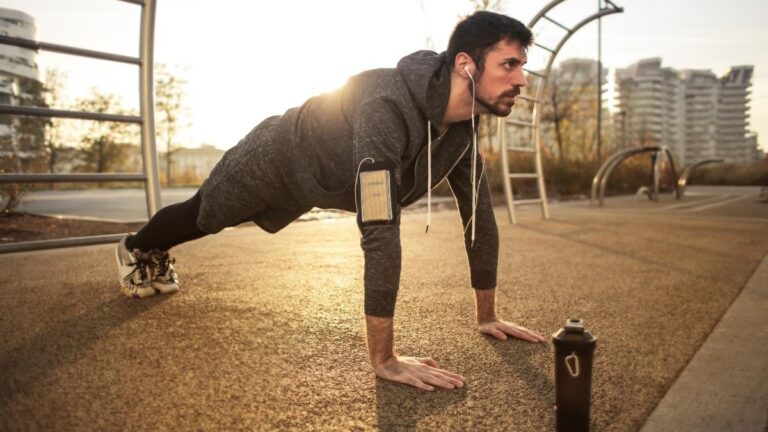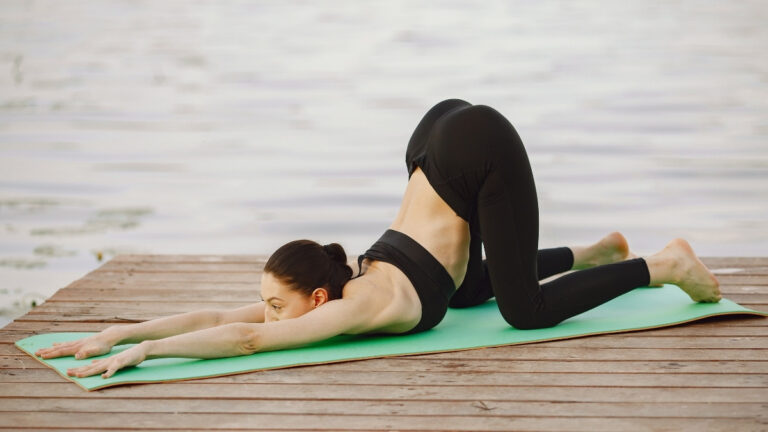He Couldn’t Climb Stairs at 60 – What Happened After 6 Months of Bedroom Exercises Shocked Everyone
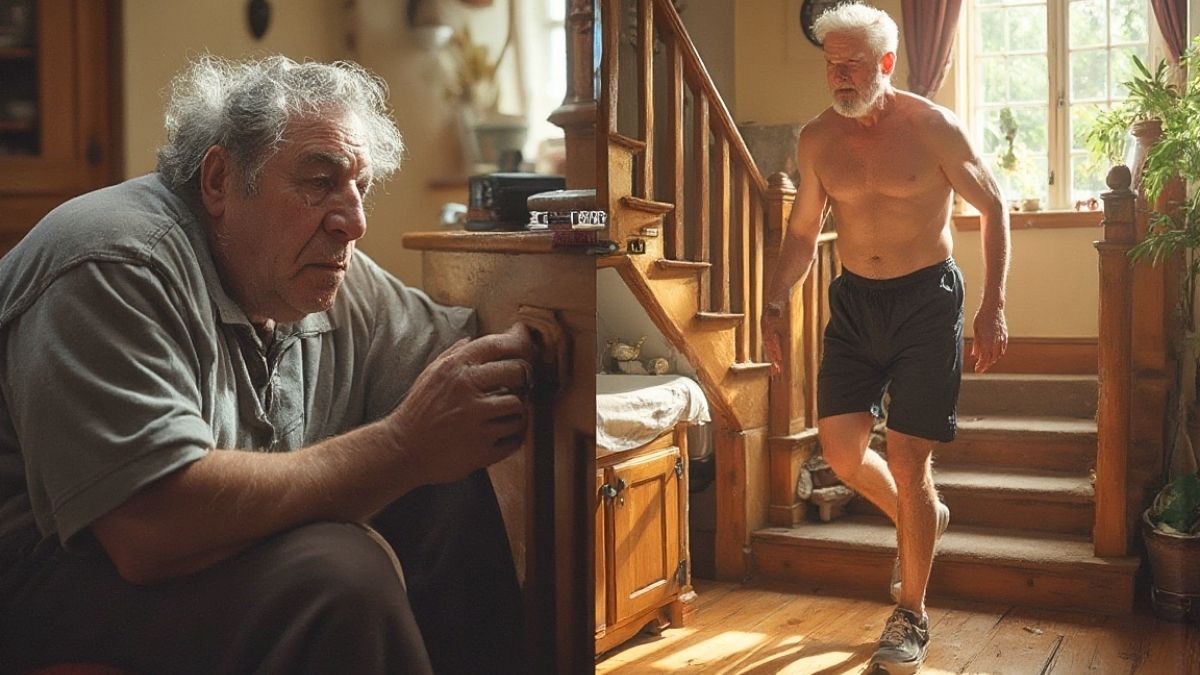
When 60-year-old Robert couldn’t climb the stairs to his bedroom anymore, his daughter found him sleeping on the couch—but what happened next changed everything.
Maybe you know the feeling. Your knees hurt. Walking gets harder each year. You grab furniture for balance. The fear creeps in: What if I fall? What if I need help with everything? What happens when I can’t live alone?
Here’s the truth: You’re not broken. You’re not too old. You just need the right plan. This article shows you exact bedroom exercises for seniors that brought Robert from couch-bound to hiking in 6 months.
You’ll discover exercises for seniors who can’t walk far. Simple moves you can do next to your bed. No gym. No equipment. Just 10 minutes a day to regain mobility.
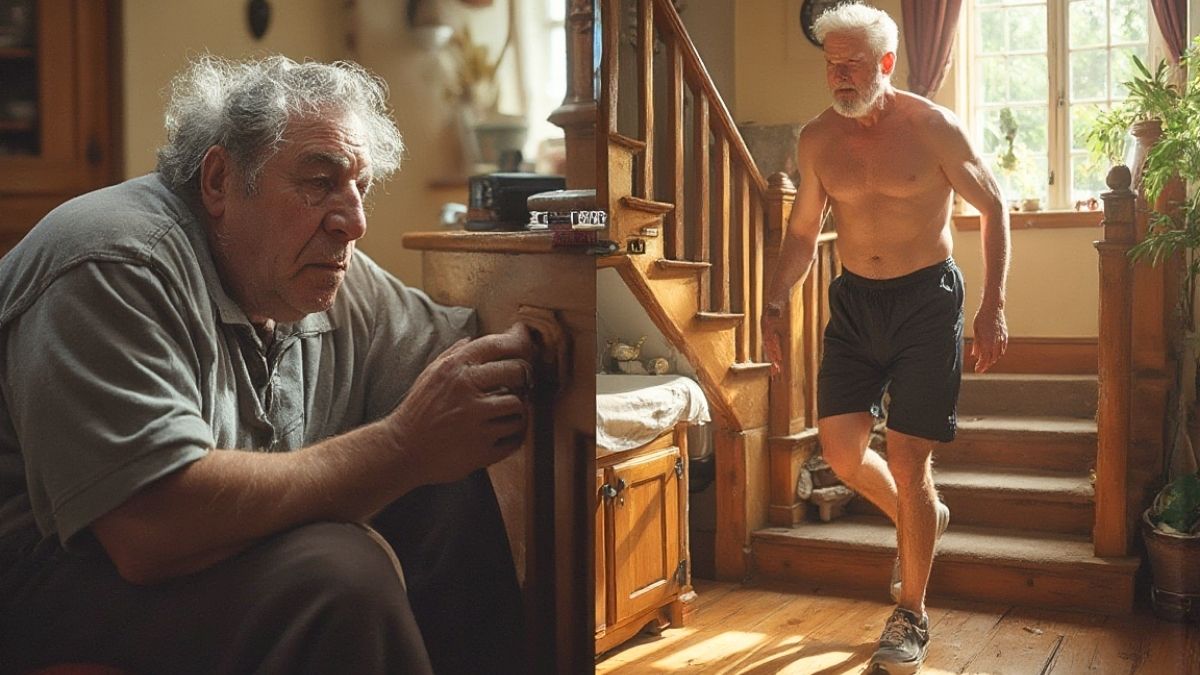
You’ll see Robert’s exact week-by-week progress. His setbacks. His victories. The specific exercises that worked. Plus, you’ll learn which mistakes almost stopped him—and how to avoid them.
If Robert could go from unable to climb stairs to hiking with grandkids, what could you do? Let’s find out.
The Day Everything Changed: Robert’s Wake-Up Call

Robert knew something was wrong when he stood at the bottom of his stairs, gripping the railing until his knuckles turned white. His legs shook. His heart raced. And for the first time in his life, those 14 steps to his bedroom looked impossible.
“I tried three times,” Robert remembers. “On the third try, my knee gave out. I caught myself on the railing, but barely.”
That night, he slept on the couch. The next morning, his daughter Sarah found him there, still in yesterday’s clothes.
The truth hit hard. Mobility issues in seniors don’t happen overnight—they creep up slowly. But Robert’s wake-up call came all at once. He couldn’t get to his own bedroom. He couldn’t shower upstairs. Simple things became mountains.
“I felt like I aged 20 years in one day,” he says. “The loss of independence scared me more than any diagnosis.”
Here’s what many people don’t know: 1 in 4 Americans over 65 fall each year, according to the CDC. Robert was lucky—he caught himself. But what about next time?
His doctor was blunt: “Your muscles are weak. These physical limitations will get worse without action.”
That’s when Robert made a choice. He called a physical therapist that same week.
“I wasn’t ready to give up,” he says. “I had grandkids to play with. Places to go. I just needed to figure out how to get strong again—starting from where I was, not where I used to be.”
The Simple Bedroom Exercise Plan That Started It All
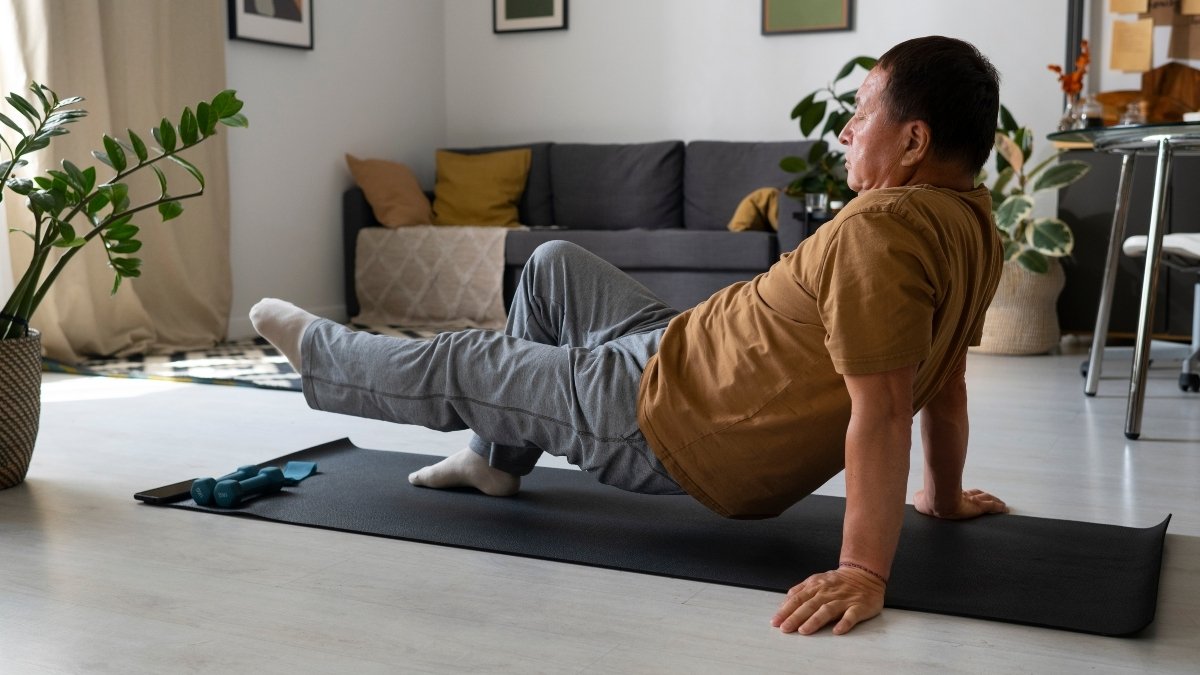
Robert’s physical therapist, Maria, didn’t start with exercises. She started with questions.
“Can you stand from a chair? How long can you stay standing? Can you lift your leg while sitting?” These simple tests showed exactly where Robert needed to begin.
“Most people try to do too much,” Maria explained. “We’re starting with bedroom exercises for seniors that match your current ability.”
Here are the exact six exercises that changed everything for Robert:
1. Seated Leg Lifts
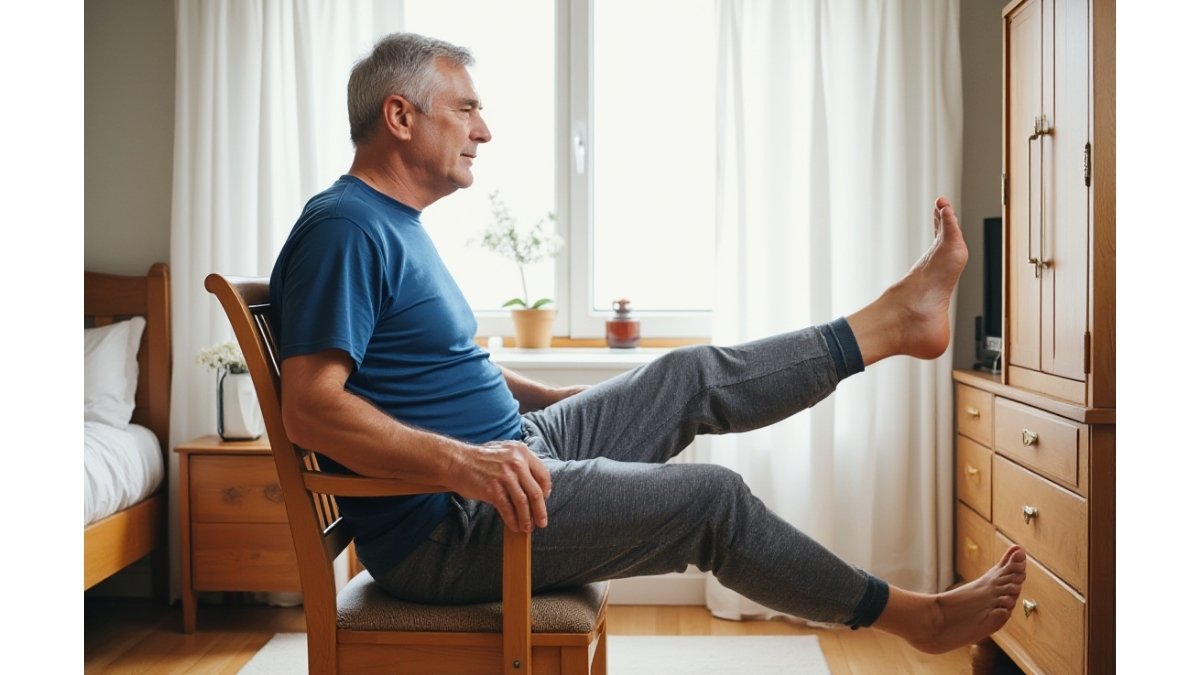
Sit in a sturdy chair. Straighten one leg out front. Hold for 3 seconds. Lower it slowly. That’s it.
- Start: 3 sets of 5 per leg
- Goal: 3 sets of 10
- Why it works: Builds thigh strength needed for stairs
2. Bed Push-Ups
Stand arm’s length from your bed. Place hands on the mattress. Do push-ups at this easy angle.
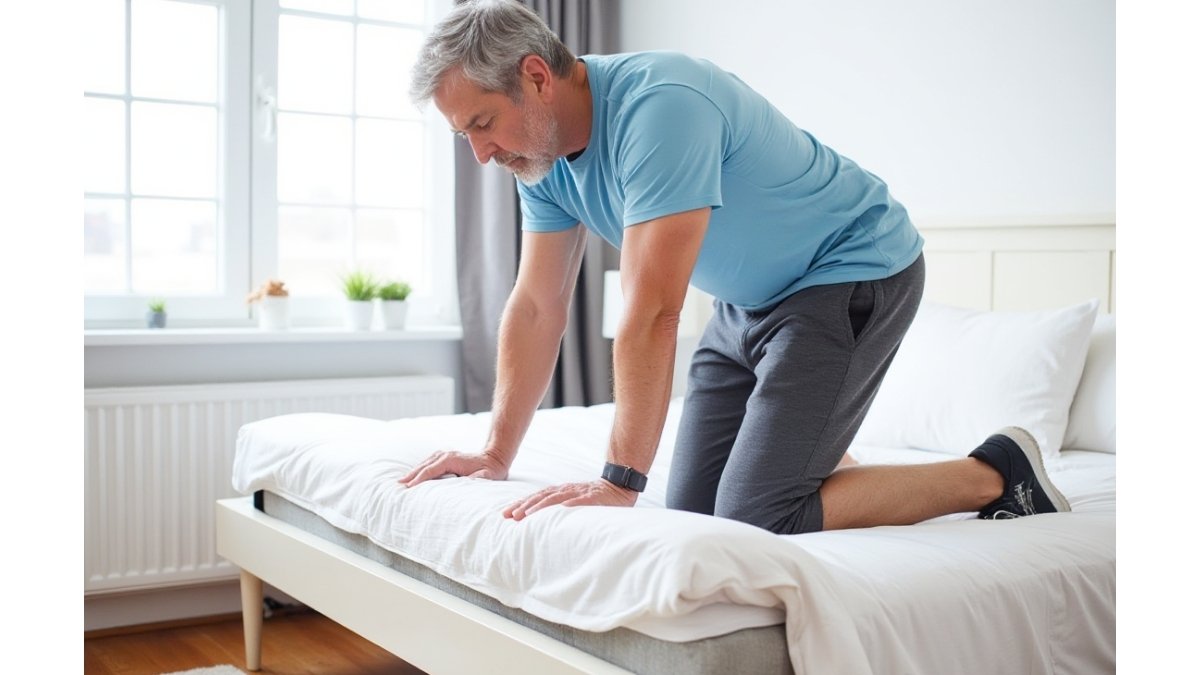
- Start: 2 sets of 5
- Goal: 3 sets of 15
- Make it easier: Use a higher surface like a dresser
3. Ankle Pumps and Circles
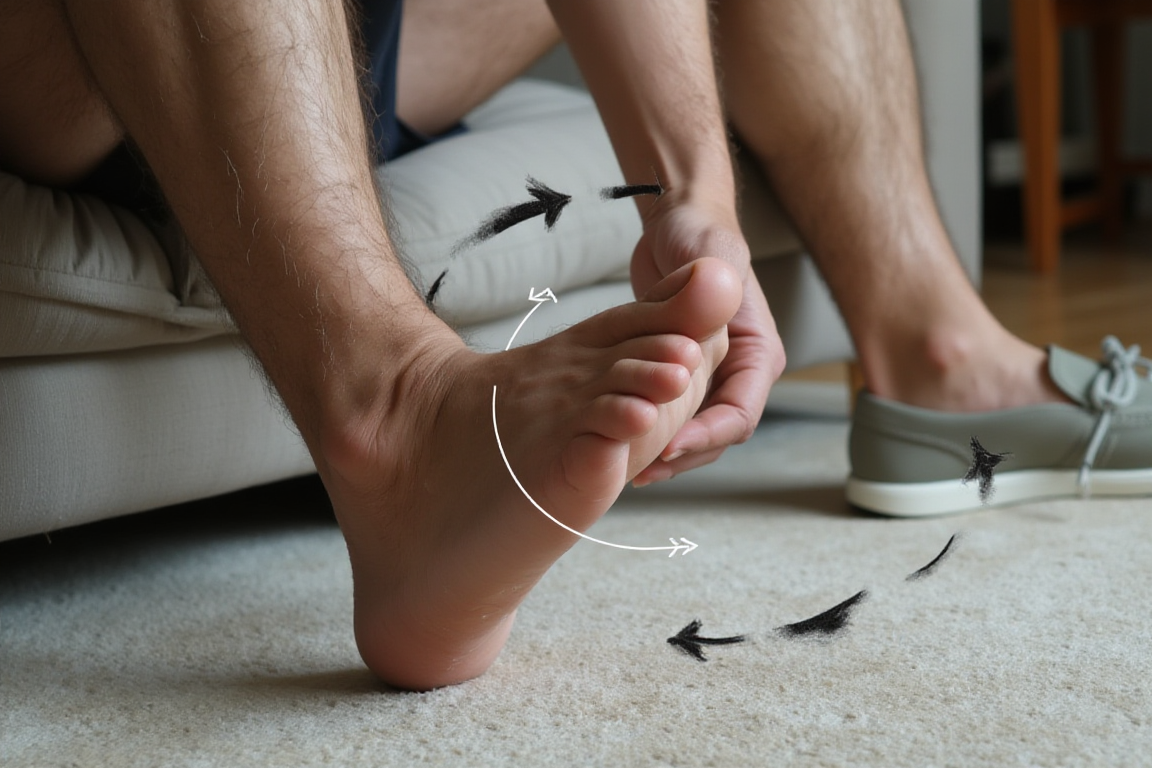
Sit anywhere. Point toes up, then down. Do circles both ways. This one’s almost too simple, but it matters.
- Do this: 20 pumps, 10 circles each way
- When: While watching TV
- Secret benefit: Improves balance
4. Seated Marching
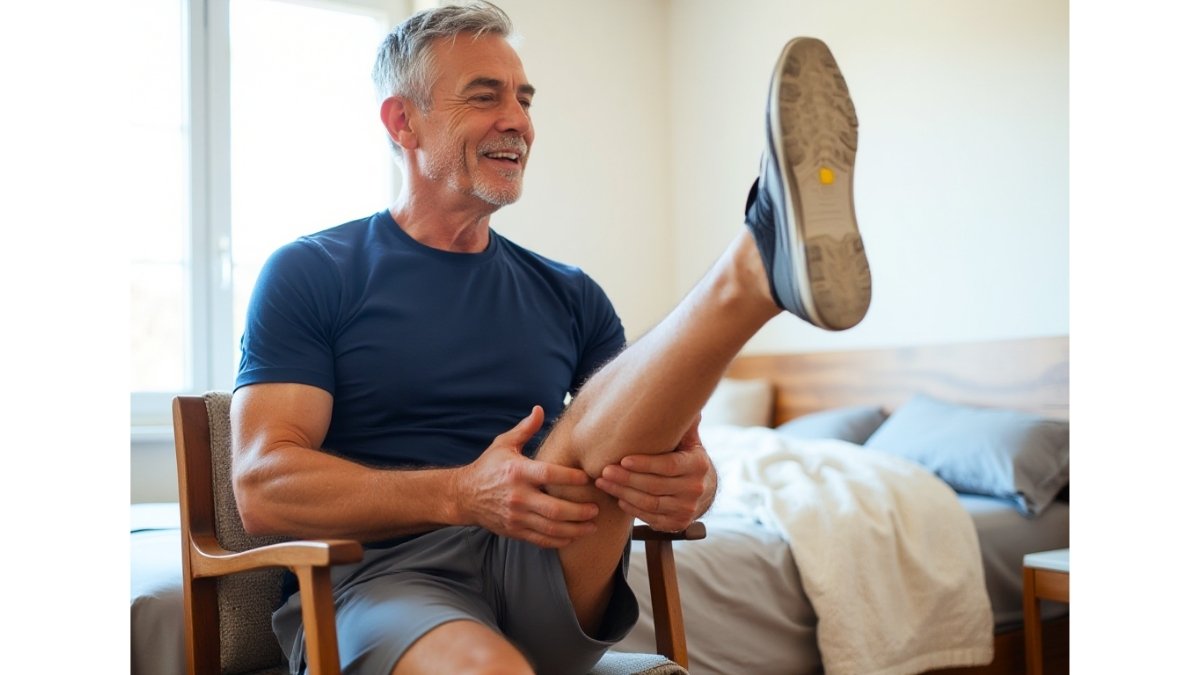
Sit tall. Lift one knee up, then down. Alternate legs like you’re marching.
- Start: March for 30 seconds
- Goal: 2 minutes straight
- This builds: Core strength and hip flexibility
5. Wall Sits
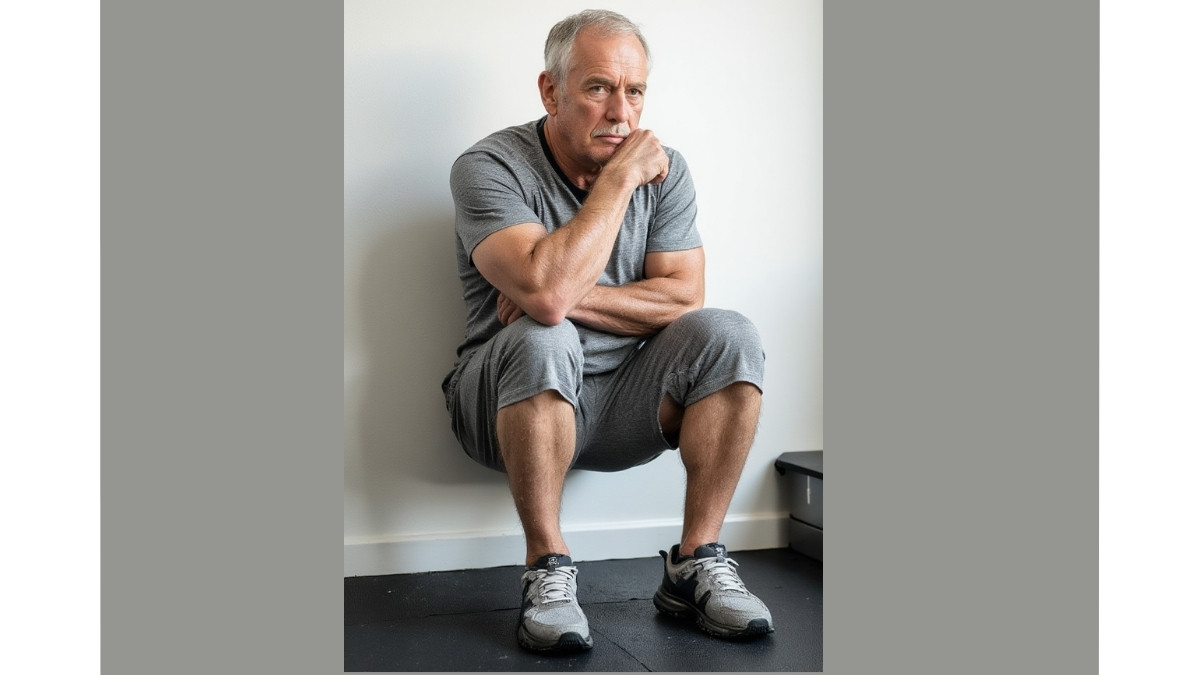
Stand with your back against a wall. Slide down just a few inches. Hold.
- Start: Hold for 10 seconds
- Goal: 60 seconds
- Reality check: Even 10 seconds is hard at first
6. Resistance Band Rows (Towel Version)
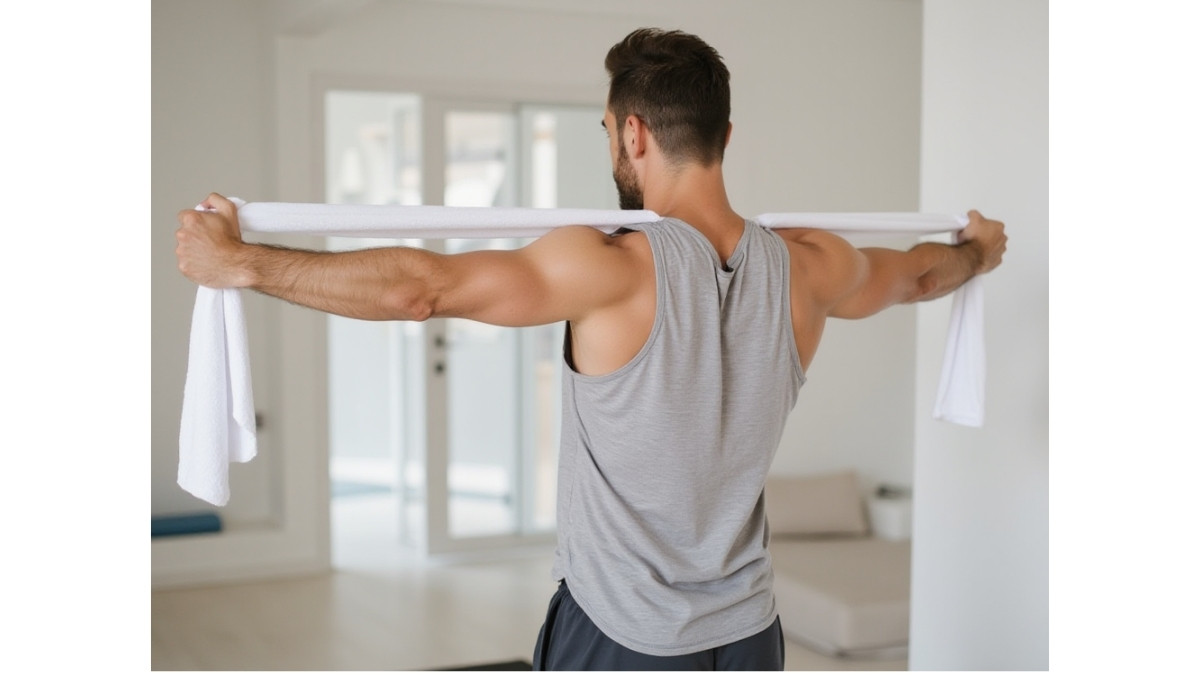
Hold a towel with both hands. Pull it tight like you’re trying to rip it. Hold 5 seconds.
- Start: 10 pulls
- Upgrade: Use a resistance band later
- Targets: Back muscles for better posture
Equipment needed? A chair, a wall, and a towel. That’s it.
“These chair exercises for elderly strength look too easy,” Robert said at first. But after one week, he was sore in muscles he forgot he had.
The key? These low impact exercises for over 60 work because they’re safe. You can’t fall. You won’t hurt joints. But you will get stronger.
Safety first: Stop if something hurts (not just muscle tiredness—real pain). Rest between exercises. And always check with your doctor before starting safe senior workouts.
“I did these exercises every morning in my bedroom,” Robert says. “Some days just 10 minutes. But I never missed a day.”
Week-by-Week Progress: The Transformation Timeline
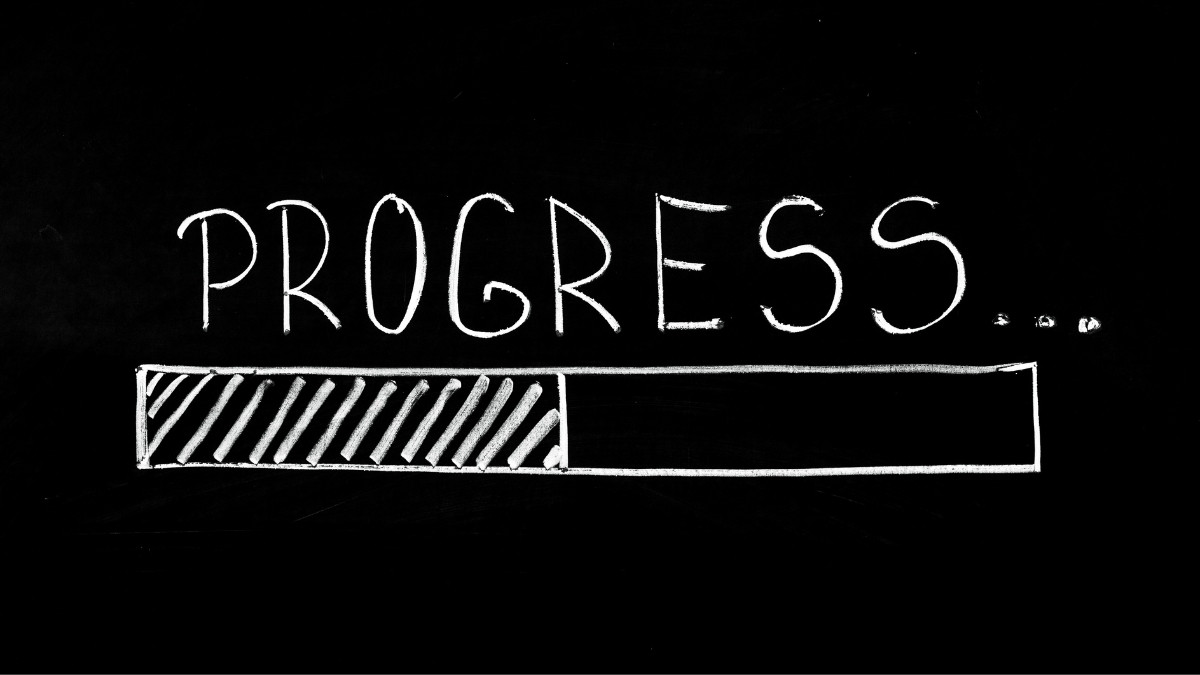
Robert kept a journal. Every small win went in that notebook. Here’s what real senior fitness progress looks like—no sugarcoating.

Weeks 1-2: The Tough Start
“Everything hurt,” Robert wrote on day 3. “Even the easy exercises feel impossible.”
By day 10, something shifted. The exercises felt less awful. He could do 8 leg lifts instead of 5. Small win.
Week 2 milestone: Robert stood from his chair without using his arms. First time in months. His daughter cried when she saw it.
Weeks 3-4: First Real Changes
The morning stiffness started fading. Getting out of bed took 5 minutes instead of 15.
“I noticed I wasn’t grabbing furniture when I walked around the house,” Robert says. “My balance was better.”
Month 1 achievement: Robert walked to his mailbox alone. 50 feet. No cane. His neighbor asked what was different.

Month 2: Strength You Can Feel
This is when the mobility improvement timeline gets exciting. Robert could feel actual muscles in his legs again.
Wall sits went from 10 seconds to 35 seconds. Bed push-ups? He did 12 in a row. The numbers mattered less than this: He could carry groceries again.
“I stopped planning my day around what I couldn’t do,” he says.
Months 3-4: Life Gets Easier
The exercises became routine. Like brushing teeth. And the payoff was huge.
Month 3 breakthrough: Robert climbed 5 stairs holding the rail. He sat on step 5 and cried. Good tears this time.
Daily life transformed. He could:
- Shower standing up
- Get in and out of cars easily
- Play on the floor with grandkids
- Walk through the grocery store
Months 5-6: The Big Moment
Strength building for elderly takes time. But it works.
Month 5: Robert climbed 10 stairs. Slowly. Carefully. But he did it.
Month 6: The full flight. 14 stairs. No stopping.
“I stood at the top and looked down,” Robert remembers. “Six months ago, those stairs beat me. Now I beat them.”
The truth? Some days were harder. Progress wasn’t always straight up. Week 7, Robert’s knee hurt, so he went easier. Month 4, he got the flu and lost some progress.
But he kept going. And that’s what mattered.
“People ask me what’s the secret,” Robert says. “I tell them: Show up tomorrow. Then show up the day after that.”
The Science Behind Bedroom Exercises for Seniors

You might wonder if simple bedroom exercises really work. Science says yes. Here’s why.
The Muscle Problem Nobody Talks About Adults lose 3-8% of muscle mass every decade after 30. By 60, you’ve lost up to a third of your strength. That’s why stairs get harder. Why jars won’t open. Why you feel weaker each year.
But here’s the good news: Your muscles don’t know how old you are. They just know if you use them or not.
Your Body Can Rebuild at Any Age When you do exercises for seniors who can’t walk, even simple ones, your muscles wake up. They start growing again. Resistance training—like those wall sits and leg lifts—tells your body to make new muscle fibers. Yes, even at 70 or 80.
Studies show senior muscle strengthening can increase strength by 30% in just 12 weeks. That’s huge.
Your Brain Gets Stronger Too Exercise doesn’t just help muscles. It changes your brain. Scientists call it “brain-derived neurotrophic factor.” Think of it as fertilizer for brain cells. More exercise means better balance, faster reactions, and clearer thinking.
This matters because better balance means fewer falls. And fewer falls means staying independent longer.
The Numbers That Matter Most Strength training reduces fall risk by 23%, according to a major BMJ study. That’s nearly 1 in 4 falls prevented. Fall prevention exercises work because they fix three things at once: weak muscles, poor balance, and slow reflexes.
Low-impact movements are perfect for seniors because they build strength without hurting joints. No jumping. No jarring. Just steady, safe progress that adds up over time.
Why Bedroom Exercises Work Best You don’t need a gym. You don’t need to drive anywhere. You just need to start where you are. Your bedroom is safe. If you feel tired, your bed is right there. If you need support, you have walls and furniture.
The science is clear: These simple exercises change your body at the cellular level. They rebuild what time took away. And the best part? It’s never too late to start.
Building Your Own 6-Month Transformation Plan
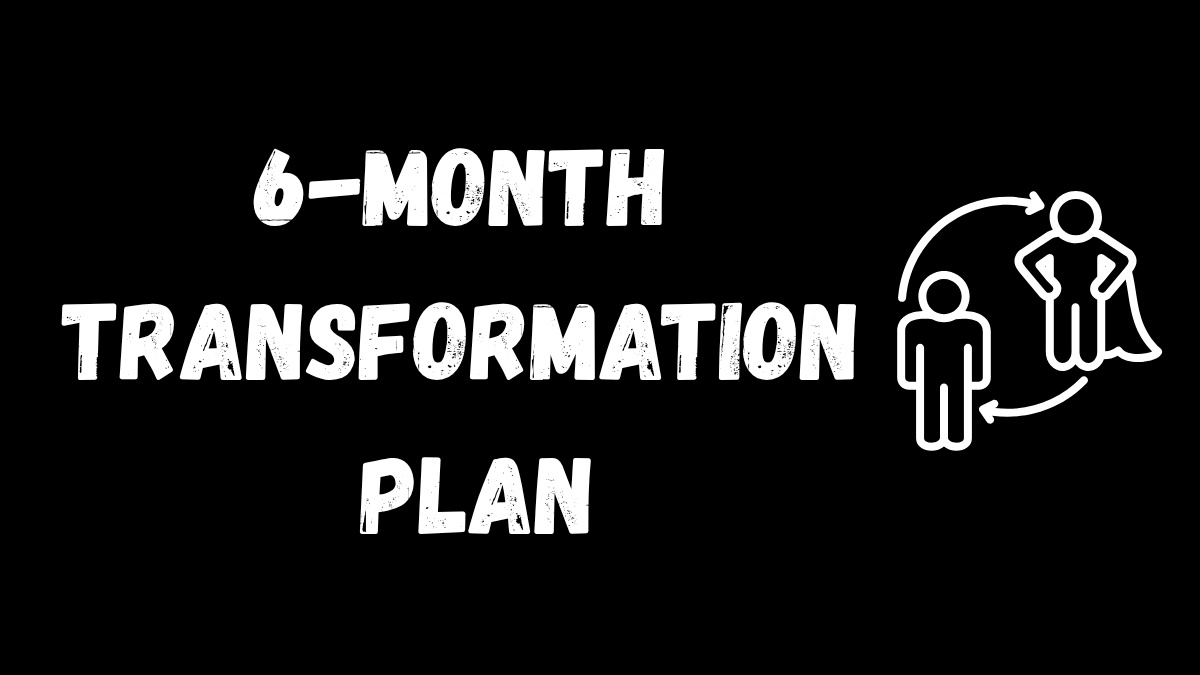
Ready to start? Here’s exactly how to create your personalized senior fitness plan.
Step 1: Know Your Starting Point Can you stand from a chair? How many seconds can you balance on one foot? Write it down. This isn’t a test—it’s your map. You need to know where you’re starting to see how far you’ve come.
Step 2: Pick Your First Three Exercises Start with three bedroom exercises for seniors from Robert’s list. Choose the easiest versions. Can’t do wall sits? Start by just leaning against the wall. Can’t do bed push-ups? Start standing further back.
Step 3: Set Real Goals Week 1: Do exercises 3 days. That’s it. Don’t aim for every day yet. Month 1: Do exercises 5 days a week. Month 3: Add one new exercise. Small steps work.
Step 4: Track Everything Get a notebook. Write what you did each day. “5 leg lifts, 20-second wall sit, felt good.” Download our free exercise log at [website]. Or use any calendar. Just track it.
Step 5: Level Up Safely When an exercise feels easy for two weeks straight, make it harder. Add 5 more seconds. Do 2 more reps. Never jump ahead too fast. Your progressive exercise program should feel challenging but safe.
Free Resources That Help:
- Chair should be 17-19 inches high (standard dining chair)
- Resistance bands: Start with light (usually yellow or red)
- YouTube: Search “National Institute on Aging exercises”
- Print our visual guide with all 6 exercises
Remember: Robert started weaker than you might be. Six months later, he climbed those stairs. Your transformation starts with tomorrow morning’s first exercise.
Conclusion:

Robert’s story proves one thing: Age is just a number. At 60, he couldn’t climb stairs. At 61, he’s hiking with grandkids. The difference? Simple bedroom exercises for seniors done every single day.
You don’t need a gym membership. You don’t need fancy equipment. You just need to start. Ten minutes a day beats an hour once a week. Small steps beat no steps. Progress beats perfection.
Remember what happened to Robert. Week 2: Standing without help. Month 3: Five stairs. Month 6: Full flight of stairs. Each tiny improvement added up to something life-changing.
Ready to regain mobility and independence? Download our free “First Week Bedroom Exercise Guide” and start your transformation today. Six months from now, you could be writing your own success story.
The stairs that defeat you today? They’re waiting for you to beat them. Start tomorrow. Start with one exercise. Just start.


